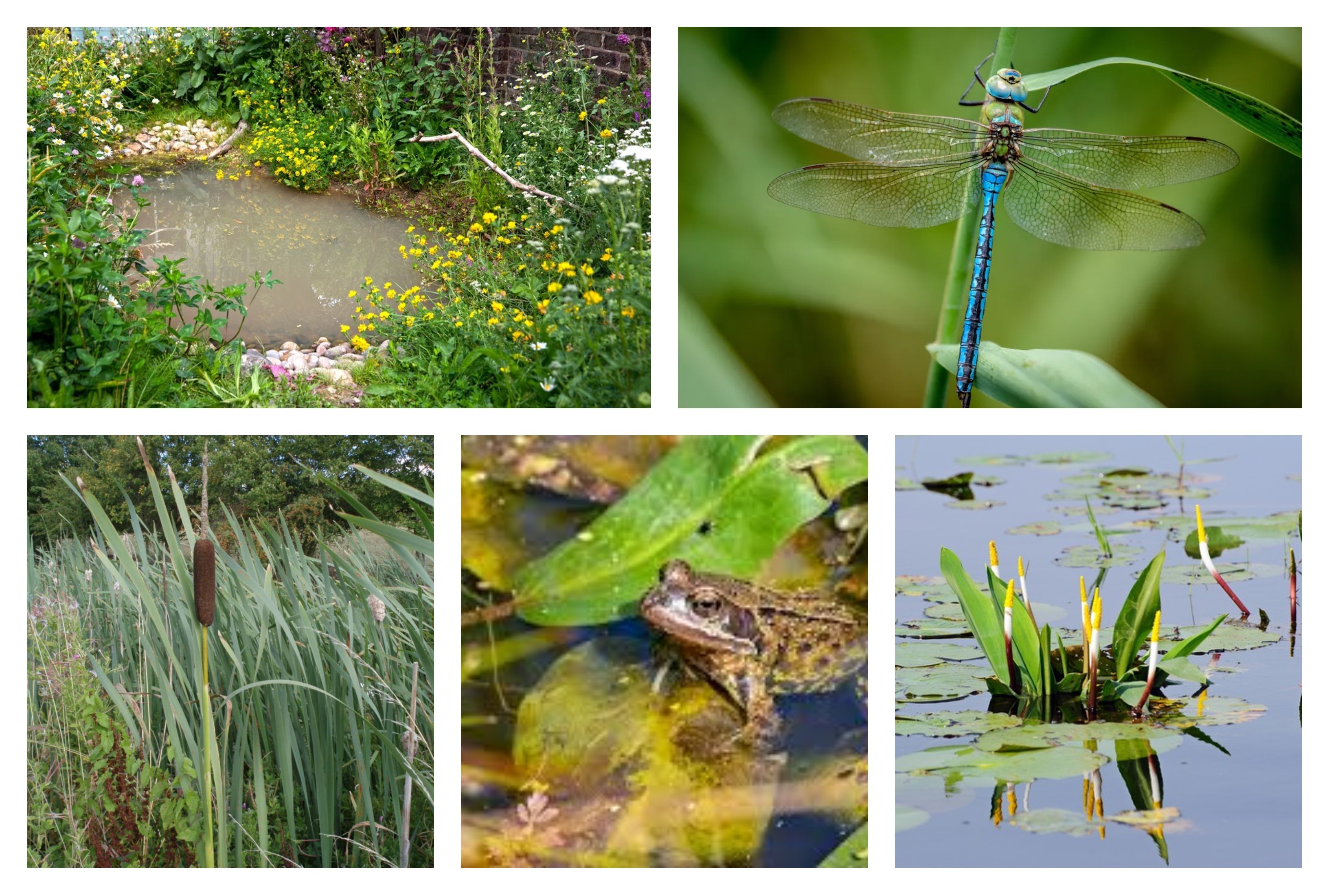Create a wildlife pond
The UK's wetlands have declined by nearly 90% in the last century alone, wrecking havoc on the species that rely on these important habitats and degrading the cycles which would otherwise help absorb carbon from our atmosphere. We can use our gardens and community spaces to help mitigate this loss and provide important refuge for our wetland species such as newts, frogs, toads, and dragonflies.

Step 1
It is better for wildlife if you put the pond in a warm, sunny area that will allow tadpoles, dragonflies and plants to flourish. You can begin by marking out where you want your pond to be on the ground with a rope or even some stones so you can think about whether it will suit you and your garden. As you begin start to dig, make sure the sides are level, while also making sure to include some shallower areas inside. Having a slope is ideal as this will allow wildlife to access the pond with ease and mean you can plant a variety of species.
Step 2
Once your satisfied with the hole, be careful to remove any sharp stones or roots that might damage or pierce the pond lining. Put down a layer of sand down, covering mud entirely. Now around the hole dig a trench. When you put your liner in, this will allow you to overhang the liner. Make sure the liner itself is weighed down with rocks, both in the pond and in the trench so there is no chance of movement.
Step 4
Next, fill the bottom of the pond up with sand, and then you can start to fill your pond. If you can, make sure to use collected rainwater, although if you do need to use tap water from a hose it's a good idea to let the water stand for about three days before adding anything in.
After this period, you can begin to add in some plants. If you are aiming to create a wildlife pond, then try to use some native pond plants. There are some great species that will provide for nature and bring a splash of colour to your gardens:
Marginals-
- Lythrum salicaria - Purple Loosestrife
- Lychnis flos-cuculi - White Robin
- Stachys palustris - Marsh Woundwort
- Mentha aquatica - Watermint
- Iris pseudacorus - Yellow Flag Iris
- Glyceria maxima - Reed Sweet Grass
- Scirpus lacustris - Common bulrush
- Typha latifolia - Reedmace
- Myosotis scorpiodes - Water forget-me-not
- Caltha palustris - Marsh Marigold
Deep water oxygenating plants-
- Hottonia palustris - Water Violet
- Stratiotes aloides - Water Soldiers
- Myriophyllum spicatum - Spiked Water Milfoil
- Rananculus aquatilis - Water Crowfoot
- ceratophyllum demersum - Hornwort
Step 7
Watch and see what wildlife visits. Place stones, logs and plants around the edges to create habitats for pond-visiting creatures. Consider adding a plank of wood or a similar ramp to help any wildlife that might fall in. By including a gently sloping beach area when digging your pond, you can ensure wildlife have an easy way out.
